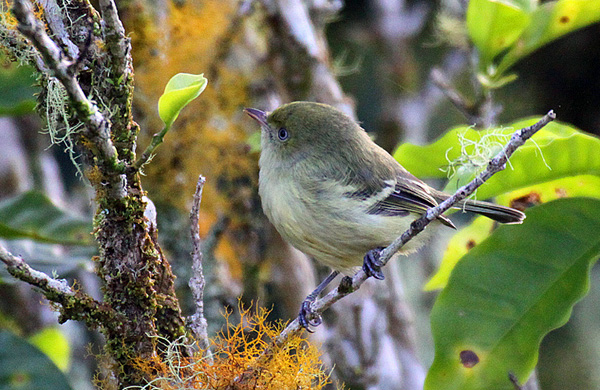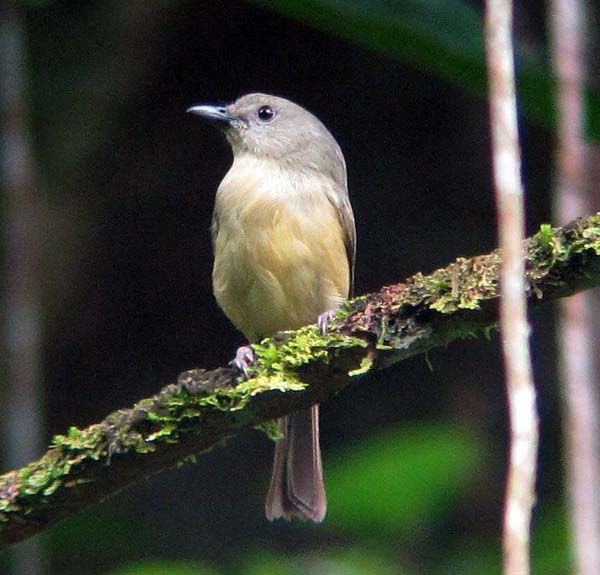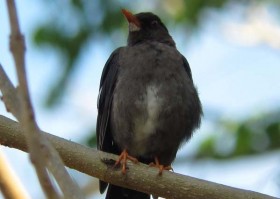Jamaica’s Endemic Birds Part 4
This week I’ll discuss another five bird species endemic to Jamaica, the first half of the oscine passerines.
Also called songbirds, these more “advanced” passerines don’t all actually have nice songs, though when analyzed, their voices are usually quite a bit more complex than those of subsocines. On Jamaica, however, some of these have wonderfully evocative and enchanting songs, creating an unmistakable soundscape that brings to my senses the smells of allspice, a moist tropical breeze, and the lilting Jamaican accent.
Jamaica has two endemic and very distinctive vireos. The Jamaican Vireo, known locally as “White-eyed Vireo” is one of the most common and adaptable of endemics, occurring at every elevation and habitat type, as long as some native plants are around. (The most destroyed region of south-central Jamaica, around the city of Christina, is perhaps the only place on the island where I imagine there are none.) The song is not particularly pretty but it is fascinatingly variable. Each phrase is a simple, typically vireo-scratchy phrase repeated 3 or 4 times almost endlessly. But after a few repetitions, a bird will switch to a very different phrase and repeat that for a while. A single bird can sing dozens of different phrases, and there seems to be endless variations found around the island. If I ever hear a song I don’t recognize in on Jamaica, it has to be a Jamaican Vireo. Photo © Maggie, aka bitemesucker2000 on Flickr.
The Blue Mountain Vireo is very different. It stands out among vireos in having neither facial markings (no eye ring or eye line) nor wing bars. It’s also one of very few members of the genus that bears pink rather than blue feet. Its song is also very atypical – a smooth, purring trill that lacks the burry quality, repetition, and complexity that most other vireos possess. It’s one of the few endemics on the island that doesn’t seem to have any close mainland relatives, either having been on the island so long to have evolved far from its ancestors, or perhaps indicating that its most recent mainland ancestor has become extinct without trace. This bird is so different from any mainland species that I’d not be surprised to see it placed in its own genus.
There’s not much that can be said about the Jamaican Crow other than that its babbling voice always elicits a smile from birders. Probably closely related to the similarly babbling Cuban Crow, the local name for it is the “Jabbering Crow,” and while formerly quite restricted to areas of good forest, the species has been spreading to more altered habitats and can be found in the outskirts of Montego Bay and Mandeville. This digiscoped video just barely managed to capture the sound.
The two thrushes on Jamaica have the best songs of all.The White-eyed Thrush brings to mind the Song Thrush of Europe, endlessly repeating melodic phrases, but it also has a curious secondary song consisting of two pure whistles a full tone apart, repeated back and forth. This species requires good forest, forages in the canopy, and is very shy, flitting off every time it sees binoculars being raised. I’ve found that Marshall’s Pen is the best place for seeing this bird. It doesn’t seem to be very much like any mainland thrush, but I suspect the White–necked and White-throated Thrushes are close. Photo © Víðir Óskarsson, aka Vidiro on Flickr.
The song of White-chinned Thrush is rather similar to the White-eyed’s (and equally charming) but is bit more variable, isn’t so strict about repeating each phrase, and has more high-pitched twittery sounds mixed in. It also behaves very differently from the White-eyed, often hopping on the ground (hence one of its local names, Hopping Dick). This is a very familiar bird to Jamaicans island-wide, and is probably most closely related to the Red-legged Thrush on other islands, not having any obvious mainland relatives.
Next blog I’ll talk about the final six endemics, all belonging to the nine-primaried oscine assemblage.



They are really beautiful. Nice share.